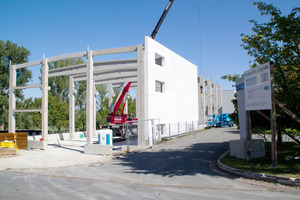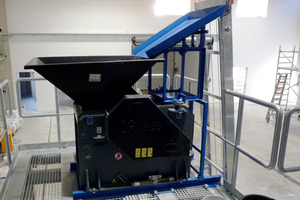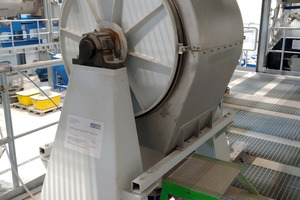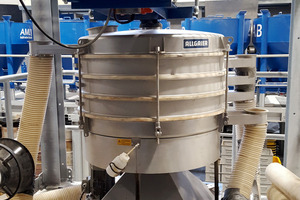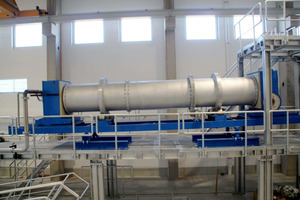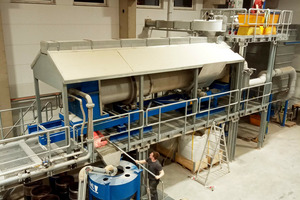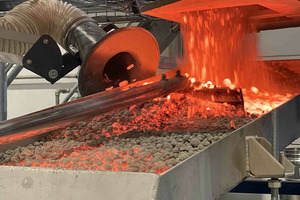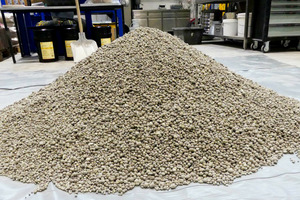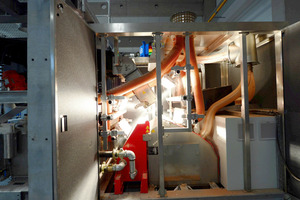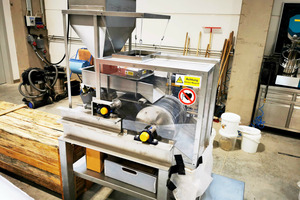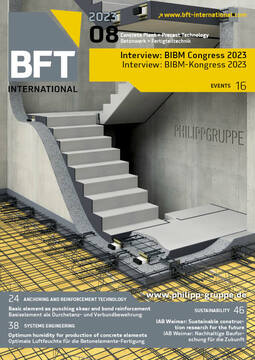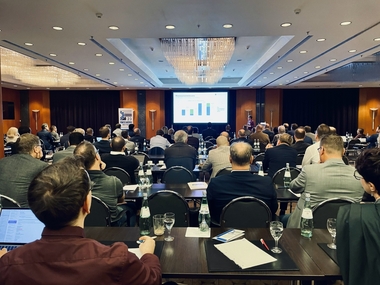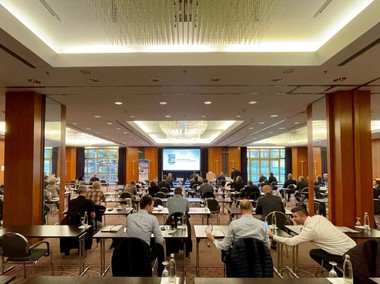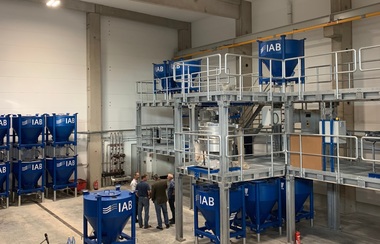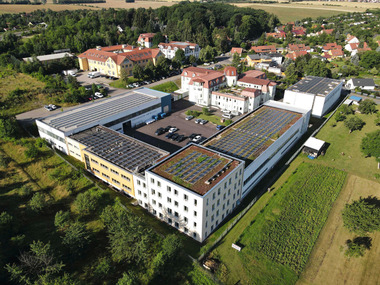IAB Weimar: Sustainable construction research for the future
At the Recycling Technology Center built in 2019, the Weimar Institute of Applied Construction Research (IAB) is conducting research on old and new processes for recycling construction materials. Under the patronage of RILEM, the 5th edition of the international conference on construction materials recycling will, for the first time, be held in Weimar/Germany – hosted by the IAB from October 10 to 12, 2023.
An increasing shortage of natural resources and construction materials, and increasing amounts of construction waste are forcing the construction industry and its players to take action. Even though the necessity of recycling construction materials is emphasized by all parties concerned, progress is slow when it comes to implementing closed material loops. One reason is that technical solutions for certain types of construction waste are either lacking or have only been tested on a laboratory scale. To remedy this deficiency, the decision was made in 2018 at the Weimar Institute for Applied Building Research (IAB) to expand the existing experimental base with an additional testing facility, the so-called Recycling Technology Center. A 36 x 18-meter large building complex was put up in a first step.
Installation and setup of technical infrastructure
In the first stage of expansion, equipment for mechanical processing was installed, which included a jaw crusher, a ball mill, various screening machines and a pan granulator. In a parallel step, a rotary kiln for the thermal treatment of construction waste was designed, implemented and commissioned in 2019.
Exploiting the potential of thermal processes
The use of thermal processes to treat mineral construction waste has been uncommon to date but offers tremendous potential. One example of this is the production of lightweight aggregates similar to expanded clay from demolished masonry. This type of construction waste is usually a mixture of bricks, mineral-bound wall construction materials, mortar and plaster. This mixture has to date been used for backfilling or other applications that hardly meet the requirement of true recycling. If the mixture includes sulfate-containing construction materials such as gypsum plaster or aerated concrete, reusing it as backfill material is also excluded. It needs to be landfilled, which causes high costs on the one hand while depriving the economic cycle of important secondary raw materials on the other.
From small-scale to large-scale testing facilities
Building on basic research, the rotary kiln was used to test the production of lightweight aggregates on a pilot scale in order to prepare for the next step towards a full-scale plant. The rotary kiln for the thermal treatment of green aggregates has a length of 6 m and a clear width of 0.6 m. Natural gas is currently used as fuel. The kiln has a maximum firing temperature of 1,400 °C. Speed and inclination of the kiln are adjustable within certain ranges.
Manufacturing recycled products
For the production of lightweight aggregates, the kiln is operated at a firing temperature of 1,200 °C. The material is retained in the kiln for a duration of approx. 25 minutes in total, and for approx. 6 minutes at temperatures > 1,100 °C. The resulting product has the following properties:
bulk densities of approx. 600 g/cm³;
water absorption, single-grain strength, thermal conductivity, freeze-thaw resistance can “compete” with conventional lightweight clay aggregates;
soluble sulfate content decreases from > 1600 mg/l in the source material to “Z0” assignment values of < 50 mg/l.
The pilot-scale tests proved that the consumption of thermal energy does not exceed the energy used for com-
parable clay products. In addition, the recycled product does not require any primary raw materials, and highly dis-
persible gypsum can be recovered from the source material.
Separation of lightweight foreign matter through gravity
If heterogeneous construction waste is not to be recycled as a secondary raw material as described, the mixture must first be separated into its components. The development of efficient sorting processes is therefore becoming increasingly important. In addition to an air classifier for separating lightweight foreign matter, the processing center also includes a gravity sorting machine for separating the mineral components.
Successful tests have already been carried out with this sorter for the separation of gypsum from a brick-concrete mixture, bricks from a brick-concrete mixture and impurities from a concrete recyclate, in each case on 16/32 mm grain sizes.
Innovative belt sorting with high-performance magnets
Sorting recycling materials < 4 mm has to date posed a special challenge. While sensor-based methods for particle sizes < 4 mm have been described in literature, it is not clear whether the transition into practice will succeed. An entirely new procedure is currently being tested at the Institute of Applied Construction Research. Magnetic susceptibility is used as a sorting criterion, which primarily depends on the Fe2O3 content of the material. There is usually a significant difference between concretes and bricks. In a large number of concretes tested, the Fe2O3 content was below 4 % by mass, while the Fe2O3content of bricks varied between 4 and 9 % by mass. A high-performance magnet detects these differences so that they can be used as a sorting criterion. The belt sorting machine used at the Recycling Technology Center is equipped with a neodymium magnet in the head pulley.
Developments beyond the laboratory scale
The Recycling Technology Center, and the ongoing expansion of the full-scale facilities with new innovative equipment, enables the Institute of Applied Construction Research to pursue developments beyond the laboratory scale and to prepare their transition into practice. A flash calciner is currently under construction, which will be used in the future to research and test the calcination process of artificial pozzolans under oxidizing and reducing firing conditions. These are part of the so-called LC3 (limestone calcined clay) cements, which can save a large proportion of the carbon emissions released in the production of cement clinker and standardized cements. The use of hydrogen as an energy source is also tested within the context of various research projects. To this end, the rotary kiln is to be further expanded in order to be able to demonstrate the suitability of new energy sources for industrial applications.
International exchange at construction materials recycling conference
The Weimar-based institute of construction research is well known and part of an effective network in the research and development community due to its recycling expertise. Under the patronage of RILEM, the 5th edition of the international conference on construction materials recycling (V.PRE = V. International Conference Progress of Recycling in the Built Environment) will, for the first time, be held in Germany – hosted by the Institute of Applied Construction Research in Weimar/Thuringia from October 10 to 12, 2023 (for a preliminary report see BFT 7/2023, p. 66/67).

